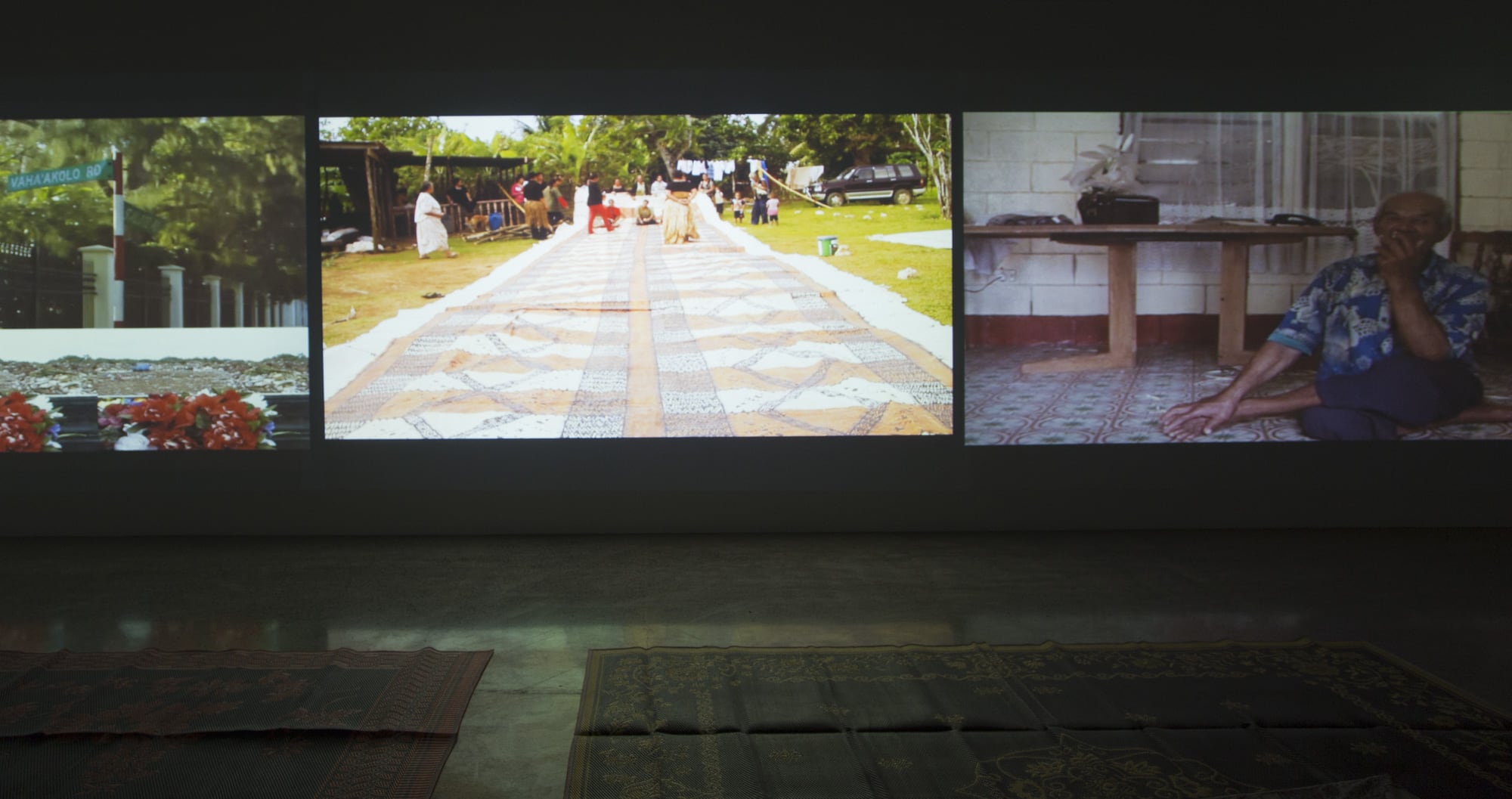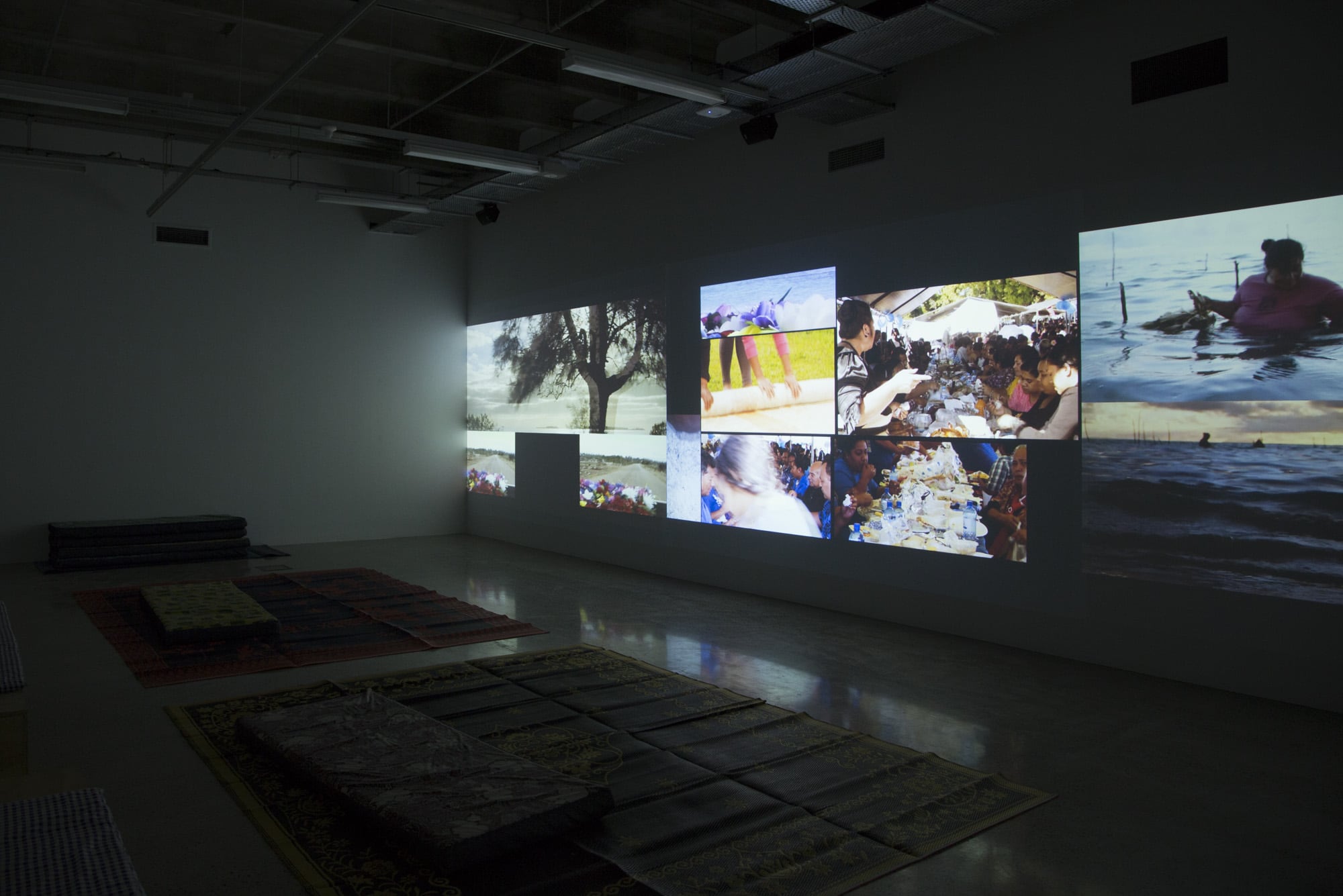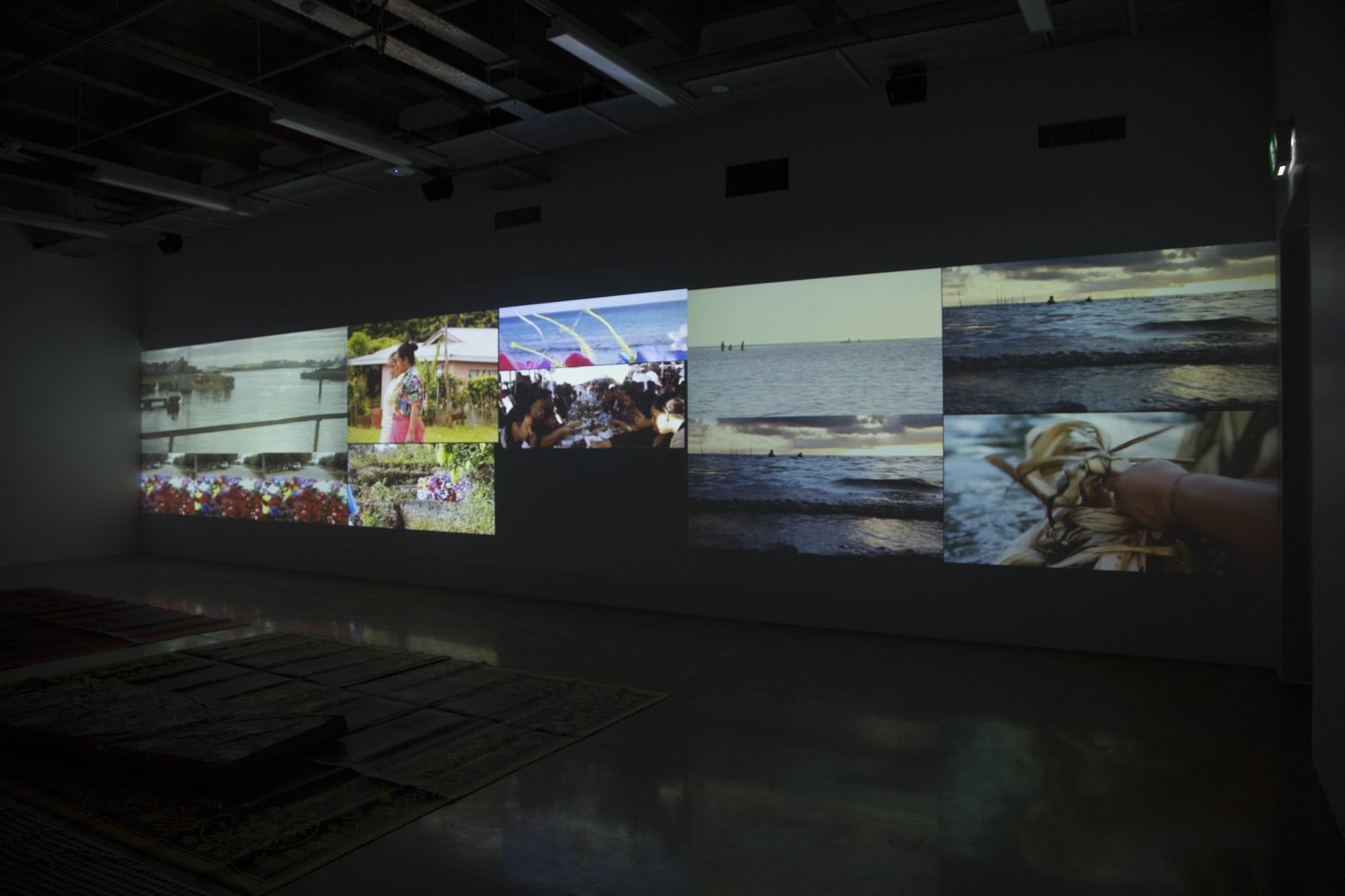


Artist: Vea Mafileʻo
A union of old and new is the very crux of Vea Mafileʻo’s latest solo exhibition Digital Launima at ST PAUL St Gallery in Tāmaki Makaurau Auckland. In just over sixteen minutes Mafileʻo weaves, layers and cuts over fifteen years of footage together into a single moving image work titled When will I see you again (2018). Spanning the length of the 12-meter-long gallery space and using three-channel projection allows the space for full immersion in Mafile’o’s work, a rare opportunity.
The term launima in Tongan refers to the length of a piece of ngatu or tapa cloth. Ngatu launima are made up of up fifty langanga, with one langanga generally measuring 45 to 60 centimetres. Made by collectives of women, a ngatu launima is considered to be koloa faka-Tonga, or Tongan treasures (commonly translated as ‘wealth’). Koloa faka-Tonga are made and collected by Tongan women over the course of a lifetime, and given as gifts for birthdays, weddings, funerals and other ceremonial and celebratory occasions.
When customary practices such as ngatu launima, which are so reliant on specific plants, move into diaspora communities such as Auckland, Sydney or Brisbane, it is not uncommon to see them adapted to the materials at hand. In this sense, Mafileʻo has adapted the practice of ngatu launima to make it digital, aligning with expertise as a documentary filmmaker. The materiality of When will I see you again is surely different to any other ngatu you may come across, and yet the grid-like composition is strikingly derivative of the original form. The digitisation of a launima raises exciting possibilities and questions around tradition.
At times, the configurations that Mafile’o creates fit comfortably within each projection; others misalign, overlap and interfere with one another. The breadth of footage shot in three locations - New Zealand, Tongatapu and Haʻapai - includes multi-generational family portraits, scenes of village life, food preparation, large communal celebrations, ending with a cover of Whitney Houston’s I will always love you being sung from the window of a shop. And yet, amidst all of that, we see the complete process of a ngatu launima being made, from the pulling of the bark to the rolling up of the final product. This footage places a launima within a launima; Mafileʻo honours the original form and the women who make it.
Throughout the film, references to Mafileʻo’s previous works are evidenced. In a recent interview with the artist, she revealed that the film includes footage from six previous projects including those with Jerry Tauamiti and her sister Emily Mafileʻo. The different qualities of the cameras make this temporal element to the work clear. What also becomes apparent is the artist’s extensive documentary practice, which includes the documentation of significant moments of Tonga’s recent history. In that sense, When will I see you again has a dual macro and micro function, archiving both the artist’s own practice and contemporary Tongan narratives and history.
Ironically, despite the inclusion of so much documentary footage, the footage more closely aligns with a sense of the home video. Mafileʻo clearly has an acute ability to navigate the insider/outsider dynamics of her documentary practice. Perhaps having a launima approach to filmmaking shifts traditional documentary dynamics so that When will I see you again is not so much a film of Tongans but a Tongan approach to film.
In the final sequence, while I will always love you is being sung, a woman goes to buy something from the store. For a moment, you think the singer will serve the customer, but as the customer becomes aware of the camera behind her, she leaves. In that moment, the scene is ruptured by the acknowledgment of the camera, and the artist behind it. In the same way, Vea Mafileʻo’s Digital Launima encourages you to consider the extensive amounts of footage in front of you, with I will always love you appearing as an ode to the artist’s homeland of Tonga. Perhaps, the ultimate takeaway is not necessarily the koloa itself, but the makers of the koloa. Digital Launima serves as a reminder of the labour, love and time behind koloa faka-Tonga, digital and otherwise.
Lana Lopesi (Satapuala/Siumu) is a writer and critic of art and culture. She is also the Editor-in-Chief of The Pantograph Punch.
